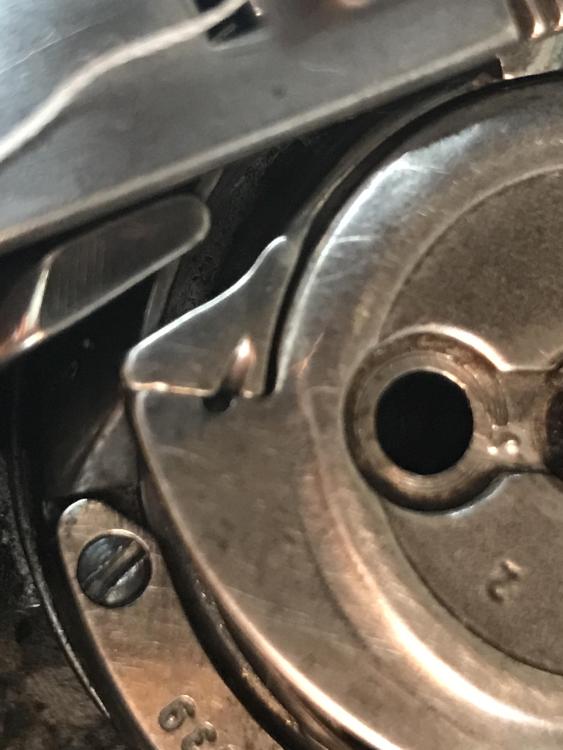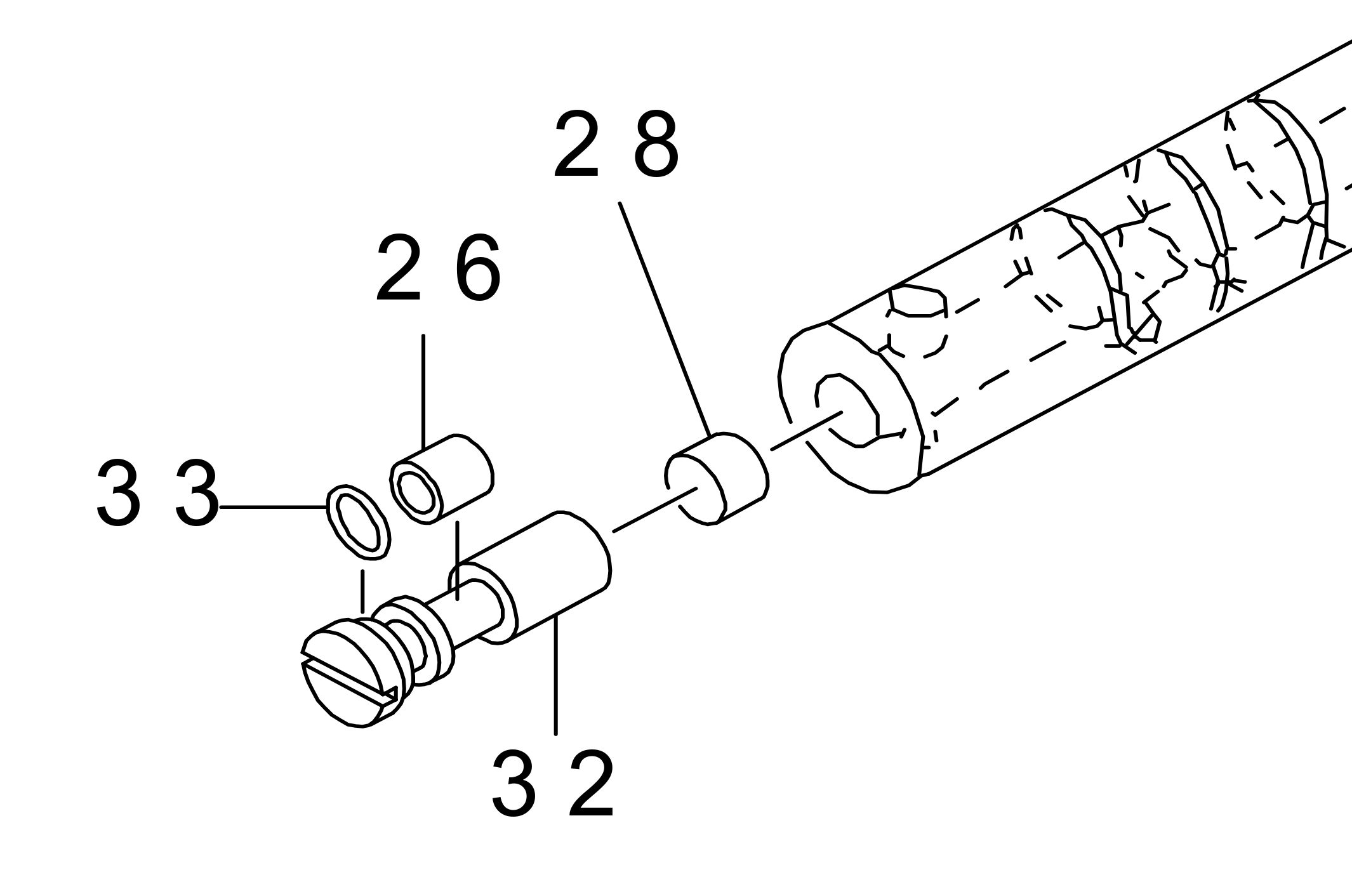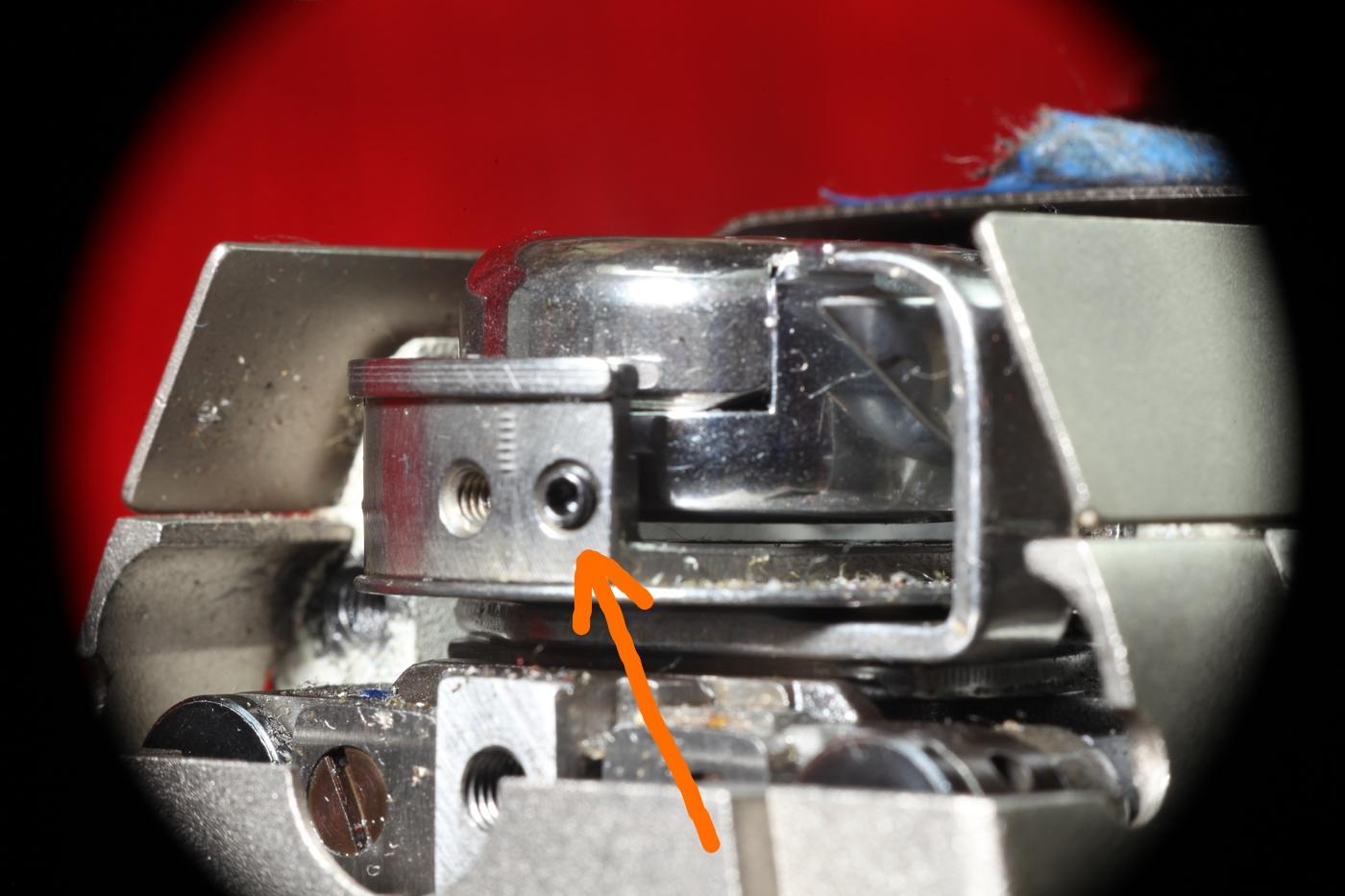-
Posts
452 -
Joined
-
Last visited
Content Type
Profiles
Forums
Events
Blogs
Gallery
Everything posted by friquant
-
As kgg mentioned, I've tried stitching with a sheet of copy paper under difficult materials. This made the stitching easier, but I had trouble removing all the bits of paper afterward. Perhaps something thinner that would dissolve in the water like tissue paper (the kind people wrap gifts in) or aluminum foil or wax paper or mineral oil or flour and water or cornmeal (ew!) or any of your favorite spices from the kitchen cabinet. Spitballing here, have not tried any of these 🙃
-
You may want to grind it to accommodate your desired thread. Here is a photo of my pfaff 545 when I got it. (note the ill-fitting bobbin case)
-

Juki DDL-8700 Oil Pump System Clogged
friquant replied to friquant's topic in Leather Sewing Machines
-

Juki DDL-8700 Oil Pump System Clogged
friquant replied to friquant's topic in Leather Sewing Machines
Where should I expect to see oil coming out at the left end of the main shaft? What does it feed oil to...the needle bar crank rod? Or the thread take-up crank shaft assembly? I expect there are some pieces that are to be oiled manually...just not sure which ones. This diagram shows the relevant pieces. Supposedly you rotate part #32 180 degrees to go from "minimum oil" to "maximum oil". Diagram is from page 3 of this juki ddl-8700 parst list: https://www.juki.co.jp/industrial_j/download_j/manual_j/ddl8700/menu/ddl8700/pdf/partslist.pdf -

Juki DDL-8700 Oil Pump System Clogged
friquant replied to friquant's topic in Leather Sewing Machines
The "fiberglass" piece was removable. I pulled it out carefully. The jet was clogged, but shoving a sewing pin through it cleared the hole. In this photo we have: (left) Oil jet (middle) The clog. (silicone-like texture) (right) The "fiberglass" piece. (filter?) Am hoping that after reassembly (without the silicone-like clog) that it will weep a few oily tears for the hook. -

Juki DDL-8700 Oil Pump System Clogged
friquant replied to friquant's topic in Leather Sewing Machines
Removed the hook This brass screw was screwed into the end of the hook shaft. The near end has a tiny hole in it, like a carburetor jet. The far end is not brass...rather looks more like fiberglass. Perhaps it is porous? After washing the brass screw in soap and water, I tried blowing through it. Nothing seemed to come out. -
How to unclog the oil system on this cloned Juki DDL-8700? This is the first pumped sewing machine I've worked on. Machine has been sitting for about five years. Actual model number is FEIT DCL-8500N. Pump The oil pump appears intact. At low speed (200 rpm) it appeared to not pump at all, so I disconnected the vertical output pipe at the top and kept increasing the speed until around 1700rpm oil started spewing out the top of the vertical pipe. So there's at least oil now on the upper hook bevel gears. Splash Test But there's another tube that feeds the hook, and I'm not seeing any evidence of oil near the hook yet. In this video the man does a splash test with a paper towel to check how much oil is reaching the hook: https://www.youtube.com/watch?v=hQCUZs1-vUY&t=163s Here is my paper towel, still dry: Valves I have opened the valve that regulates oil to the hook: and also opened the valve that regulates the oil to the needle bar crank assembly: but still not seeing any on the hook or on the needle bar crank assembly. Tthe user manual says that when machine is new or anytime after it's been sitting idle for a long while to run the machine at 3000rpm for a period of 10 minutes. So far I've run the head unit a couple minutes at 2400rpm (checked with tach). I want to see evidence of oil flowing before I run it enough that it really needs oil, if you catch my 22. Filter? Earlier in this same video the man cleans out the filter in the pipe behind the hook: https://www.youtube.com/watch?v=hQCUZs1-vUY&t=59s so perhaps that will be my next move. As for the needle bar crank, I'm not sure sure what to disassemble to clear the way. Water Worth noting perhaps that I did find evidence of water in this machine. The oil pan drain plug is rusted in place and I did not manage to free it. Not even with mild application of a kitchen torch, a few hours soaking in diesel, and an impact driver. 🤷♀️ Also the old oil looked milky. And in part of the presser bar I found a couple drops of water concealed within some drops of oil. But I don't really expect water in the past to clog the oil pathways Manual I'm using this as a manual: https://www.juki.co.jp/industrial_j/download_j/manual_j/ddl8700/menu/ddl8700/pdf/instruction_eg.pdf
-
It was very handy to be able to adjust it in increments. I had been breaking needles attempting to stitch through a 1/2" (12mm) stack of vinyl and foam (auto upholstery project). So I disconnected the belt and ran a few stitches by hand on a thick test piece and it wasn't very many stitches by hand before the hook point tried to bisect the needle. Ah-ha! After that discovered the needle guard adjustment screw, put some medium strength thread-locker on it, and backed the set screw out until the needle guard mostly prevented contrived collisions of the same sort. Then put it back together and stitched that troublesome seam in one pass (relief!). Not seeing any skipped stitches or unraveled thread yet (If I did I would think I had gone too far with the adjustment.)
-
I hadn't noticed this before, but I think it's an adjustment screw for the needle guard. (Jianglong 341) Looking closely, I could see a hexagonal shape behind the round hole. 1/16" (1.7mm) hex wrench seems to fit. Or from a different angle: Here I removed the needle guard and you can see the set screw that sits behind it: I've been wanting the needle guard to be stiffer anyway. (What good is a needle guard that just gets out of the way when the needle comes by?) Using this adjustment screw will mean there is a support closer to the bulge in the needle guard, so I expect it to flex less when the needle presses against it.
-

How to ease when sewing leather on a 1341?
friquant replied to joetroba's topic in Leather Sewing Machines
Oh that jogs a memory. I've got a deal in the works to buy this machine that has two foot pedals. It might be for raising the presser foot though 🤷♀️ -
A bag maker in the making...with a zypper, no less 🌟 That seam next to the zypper would look cleaner if you pull the old thread off. (Looks like you made a seam, ripped that seam out, but left the old thread)
-

How to ease when sewing leather on a 1341?
friquant replied to joetroba's topic in Leather Sewing Machines
Sounds like a video in the making 😉 -

How to ease when sewing leather on a 1341?
friquant replied to joetroba's topic in Leather Sewing Machines
I'd like to see that. She appears to be using a clutch motor, based on the rapid start / rapid stop and the old style ON/OFF power selector. -
You'll have better luck if you start a new topic 😉
-

How to ease when sewing leather on a 1341?
friquant replied to joetroba's topic in Leather Sewing Machines
How does she make the machine feed in reverse? She's got a knee lift for the presser foot, but both hands in the shot when she reverses. -

How to ease when sewing leather on a 1341?
friquant replied to joetroba's topic in Leather Sewing Machines
Did you account for seam allowance? For a non-eased seam, the the pieces will have the same length along the stitch line. (Not necessarily the same length along the outside edge of the leather) -
It would be handy if there were a cross reference for beehive tension springs. You know, free length, diameter at base, diameter at top, and force when fully compressed. You can of course bend your own from music wire.
-

How to ease when sewing leather on a 1341?
friquant replied to joetroba's topic in Leather Sewing Machines
Interesting...Can you send photos of the pieces of leather that comprise a single finger stall? -
I'm assuming you only need one. And as others have said, VFD is a convenient electronic solution to get 3-phase.







